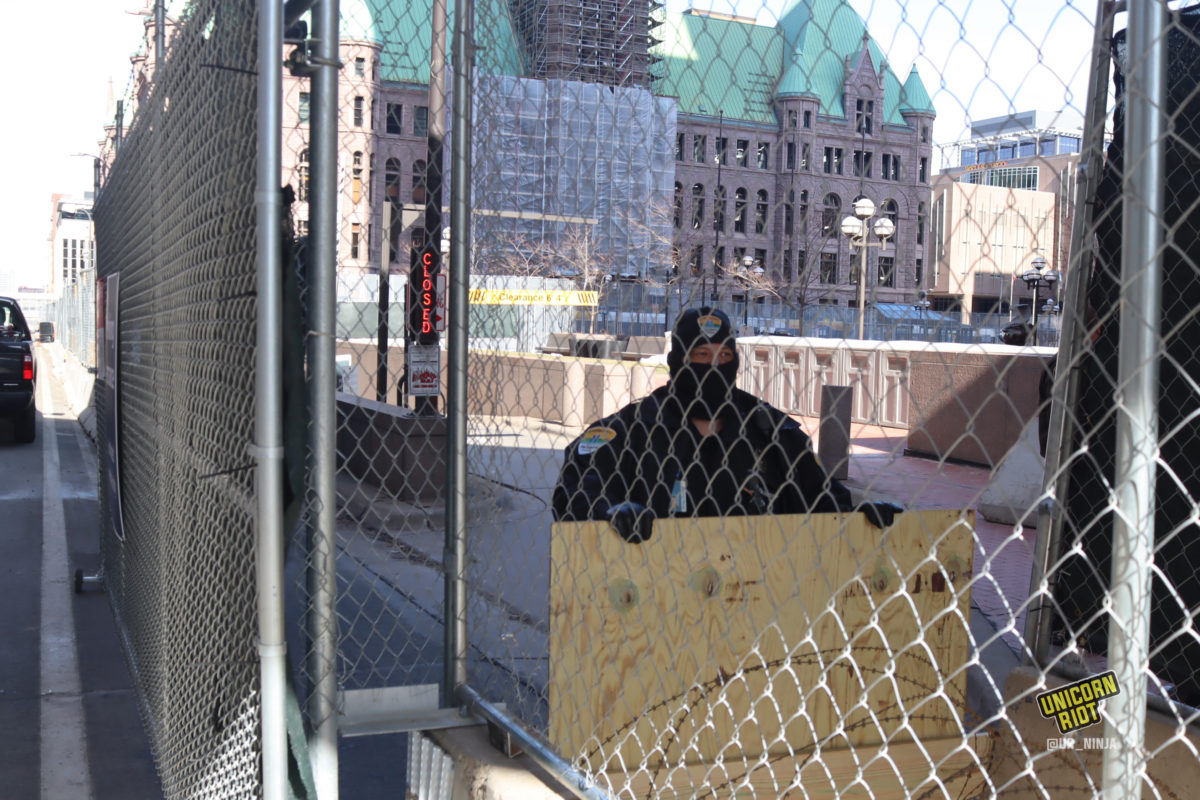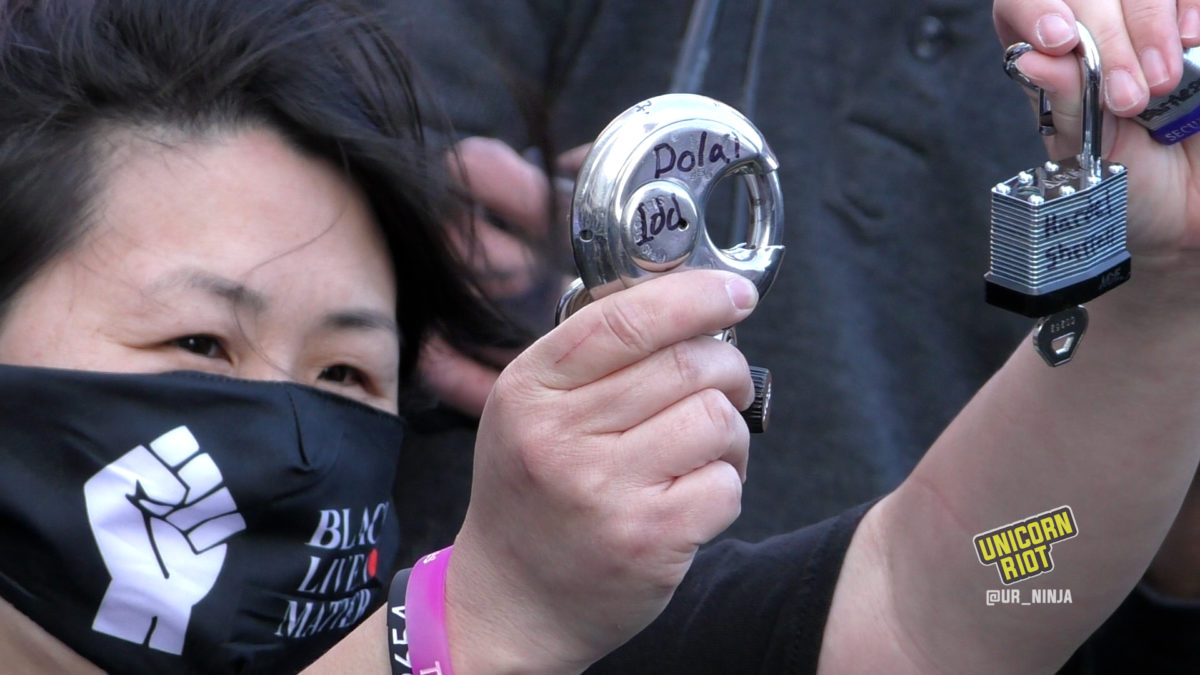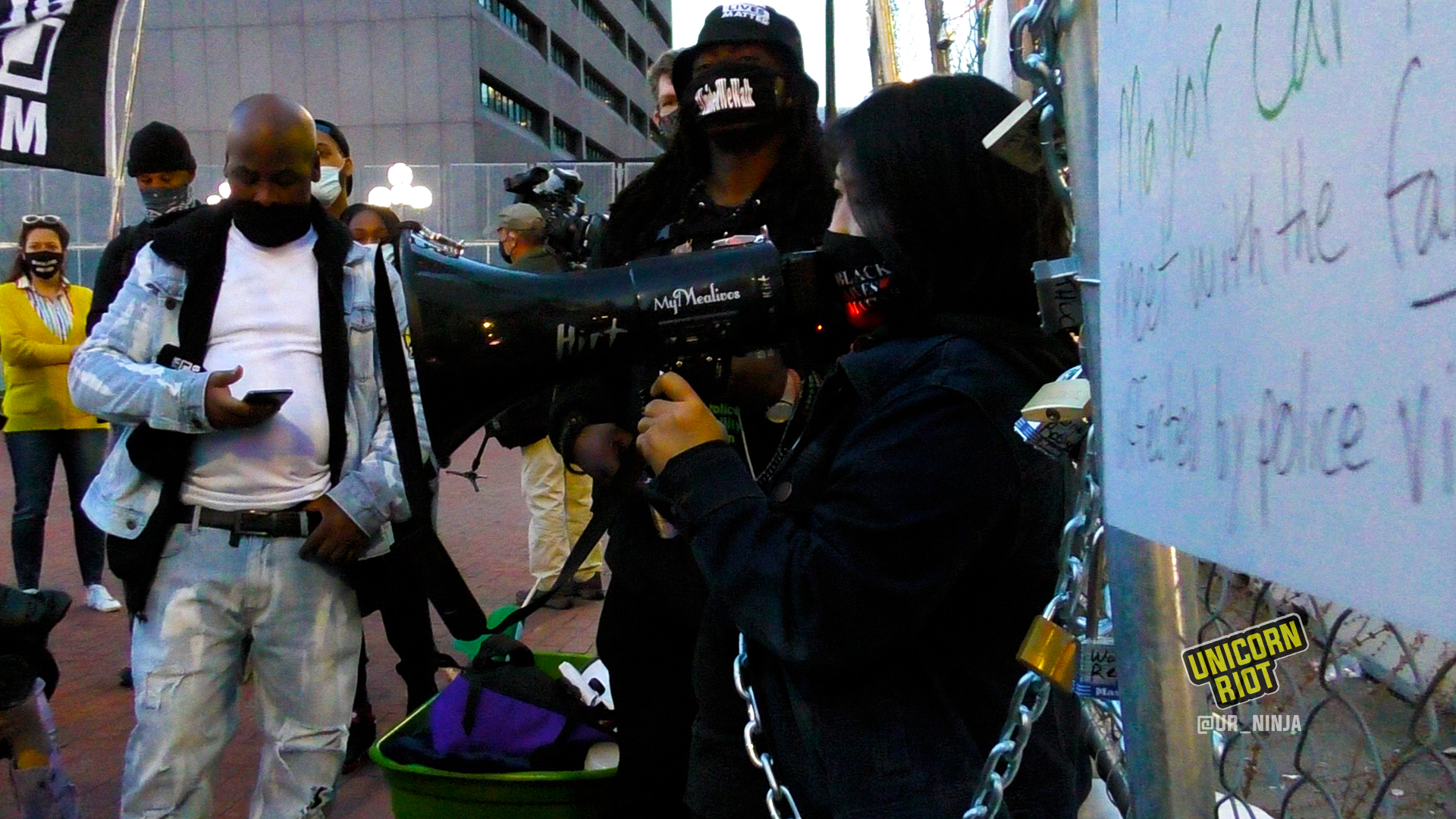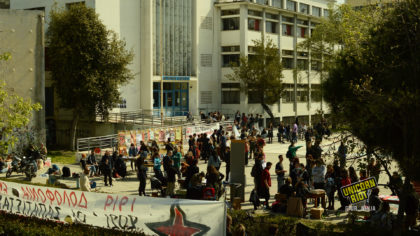‘Locks for Love’ 5-Day Occupation Sought Police Accountability
Minneapolis, MN – A five-day occupation demanding police accountability started the night of opening statements in the Derek Chauvin trial. Held outside and based on actions named ‘locks for love’, the occupation was led by Kaia Hirt, a high school teacher who chained herself to a portion of the security fence in the south Plaza of the Hennepin County Government Center, where the trial was being held.
Around 1,000 people gathered outside the Hennepin County Government Center on Monday, March 29 and marched and rallied in downtown Minneapolis. The lockdown and occupation, organized by a group called Good Trouble for Justice, started after the march. Before the locks event, a veteran of the National Guard tied dog tags to the fence while confronting the members of the National Guard that were standing outside the Government Center.
Unicorn Riot was live for the protest and beginning of the occupation.
Over a mile of fencing was erected in downtown Minneapolis as part of the $35 million spent on security during the Chauvin trial. Most of the fencing and security surrounded government buildings, namely, the Hennepin county government center.

After Hirt started the lock down, we interviewed her about why she was taking such action. Hirt talked about two past ‘locks for loved ones’ events where activists put the names of loved ones killed by police on padlocks and locked them onto the fencing surrounding the government center.
Hirt explained that after the previous locks events before March 29, authorities, along with National Guard, cut the locks off from the fencing and left the scraps on the ground. In the early morning of March 19, Black Lives Media recorded Hennepin County Government Center Security and the National Guard cutting locks from the fences.
This response by the government angered locals and the families who had their loved ones names cut off the fence.
Following the cutting of the locks, activists then changed their plans and Hirt chained herself to the fence, along with hundreds of locks. The chaining came with demands of elected politicians to meet with justice families (families who’ve lost their loved ones in the local area) and the enactment of police accountability measures.
“This fence represents the failure of the City of Minneapolis to build a relationship with the community. So, rather than them shutting us out…we’re just going to put a little something on it, to remind everyone that they murdered people that were loved.“
– Kaia Hirt
Instead of locks, Sam Pree-Gonzalez, a “veteran that just worked 14 months in Afghanistan watching my friends get murdered, coming home, and some of them killing themselves by suicide by cop, because they couldn’t live with what they did,” brought her own dog tags to hang on the fencing.
She wrote names of fallen soldiers, including her friend, on the dog tags. Pree-Gonzalez said she chose this action after the National Guard previously participated in cutting the ‘locks for love’ in the days before and this was “to see how those folks feel about cutting down their own.”
As the main march was circling back into the area of the Government Center, Pree-Gonzalez confronted several National Guardsmen who were behind the fence, stationed at the government center.
“These are your brother’s, sister’s and people that served before you that are gone. Either because they died in war. They died because when they got back, they couldn’t handle the survivor’s guilt. Or they die, just plain old fighting an unjust war.“
– Sam Pree-Gonzalez said to the National Guard stationed by the fence of the Government Center as she placed dog tags on the fence
Dozens of activists accompanied Hirt the first two nights as she stayed locked to the fence and a few rotated with her. Other activists traded places with her on the third night to allow her to leave and go to work. Taking turns locking themselves to the fence, the police accountability protesters occupied a portion of the government center’s plaza from Monday evening until Friday afternoon.
Using the pretext of cleaning, Government Center security and Hennepin County sheriffs cleared the area on Friday, April 2, after the Derek Chauvin trial was let out early for the weekend.

In the five days of 24/7 occupation, one person was arrested after allegedly violating a trespassing order received in the first days and hundreds participated in the push for police accountability.

Follow us on X (aka Twitter), Facebook, YouTube, Vimeo, Instagram, Mastodon, Threads, BlueSky and Patreon.
Please consider a tax-deductible donation to help sustain our horizontally-organized, non-profit media organization:



